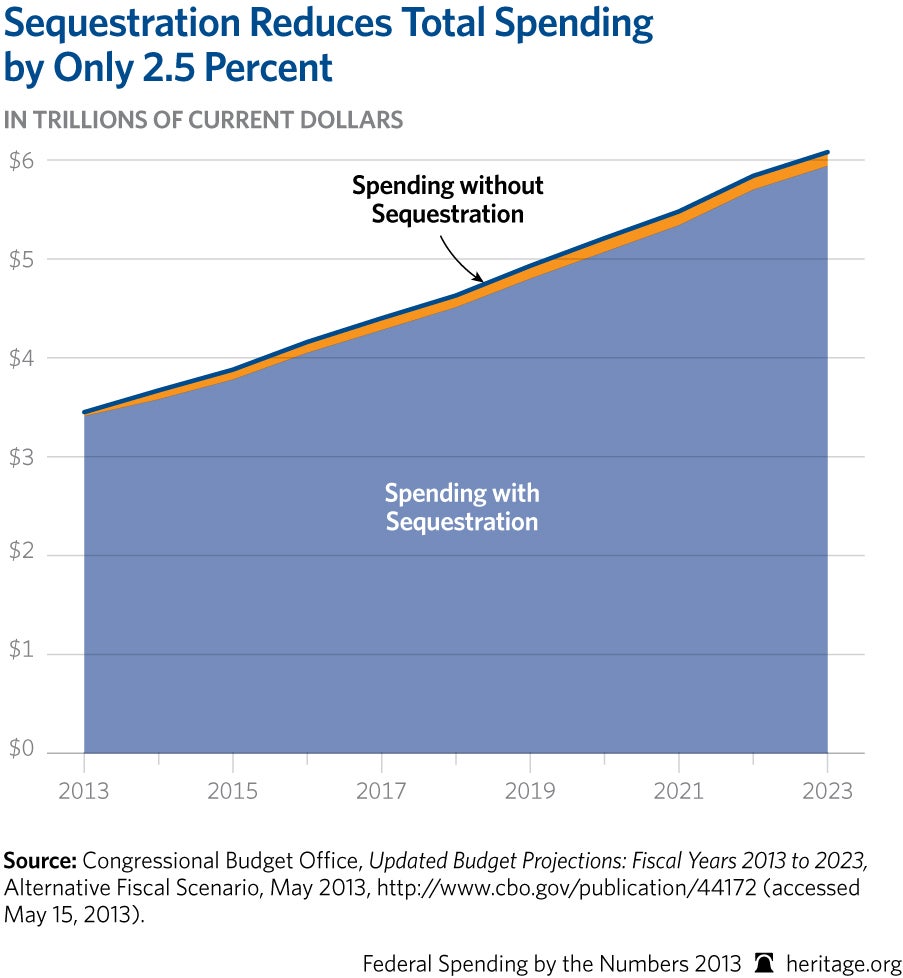Obama Wants to Reverse Sequestration. What You Need to Know.
Romina Boccia /
Four years into the Budget Control Act of 2011, President Obama is expected to once again ask Congress to break its commitment to reduce spending.
Congress should stick to it.
Obama’s budget, expected on Monday, will reportedly propose to spend more than is allowed under the statutory, sequester-enforced Budget Control Act spending caps. If Congress followed the president’s request–without reducing other spending starting in 2016–spending would be higher by at least $1 trillion over the next decade.
Under current projections by the Congressional Budget Office, released just last week, spending will grow by three-quarters, from $3.5 trillion to more than $6 trillion over the decade. These projections assume Congress enforces the Budget Control Act and sequestration.
Sequestration is not the budget-slashing mechanism the president makes it out to be. In fact, sequestration merely reduces total spending over the next decade by 2 cents on every federal dollar that would otherwise be spent.
Congress needs to do much more to reduce spending and put the budget on a path to balance. While entitlement spending reform is absolutely crucial to control spending (entitlements are responsible for 85 percent of the growth in spending over the next decade), there are numerous other ways lawmakers can exercise the power of the purse in a principled manner.
The Defense Department has been underfunded for several years and Congress should increase spending on military capabilities and readiness. In addition to entitlement reform, Congress should address wasteful, inappropriate and outside-the-proper-scope of government spending. The forthcoming Heritage Budget Book will identify 106 important ways to reduce the size and scope of government.

